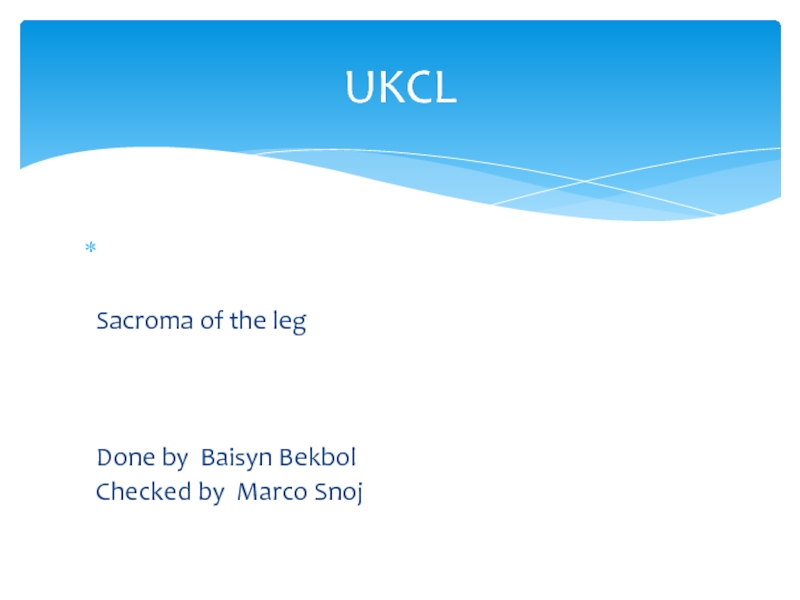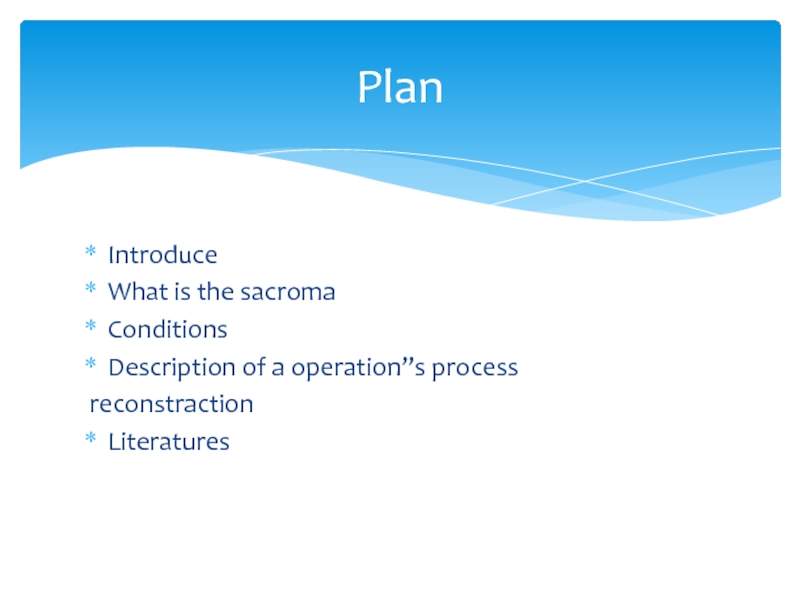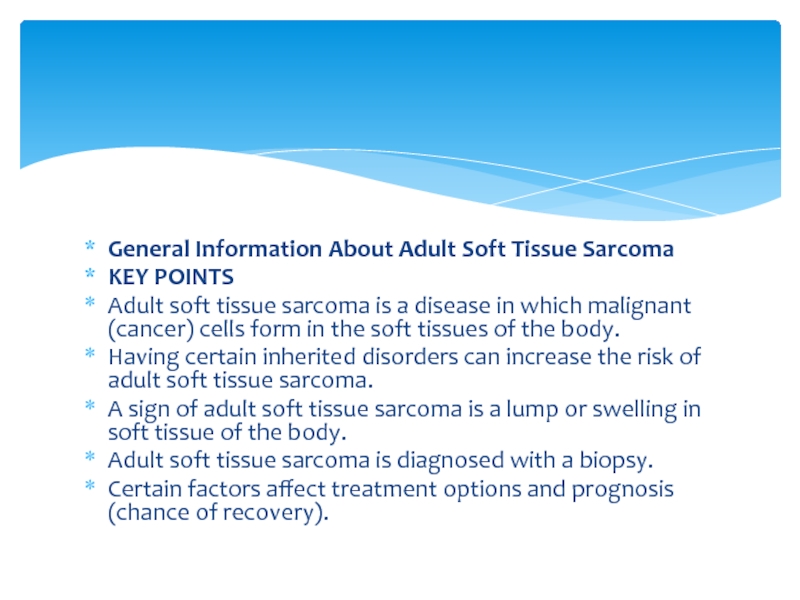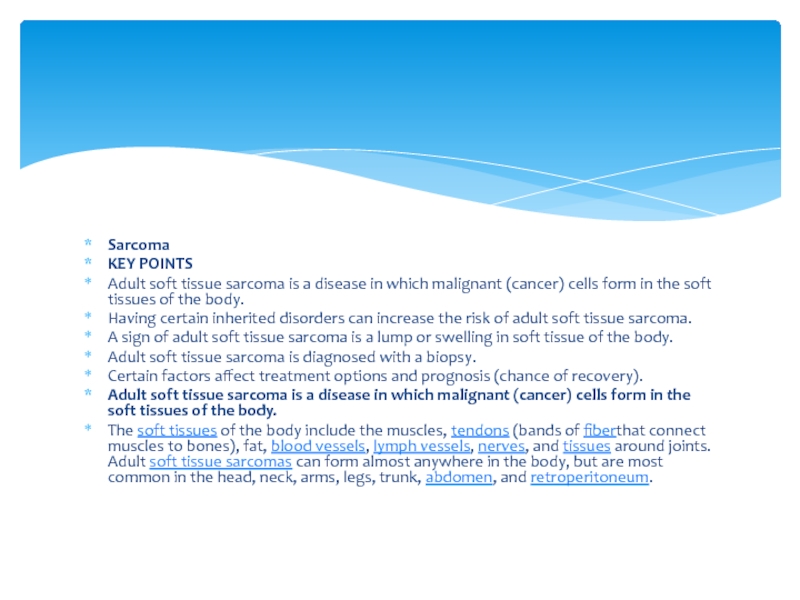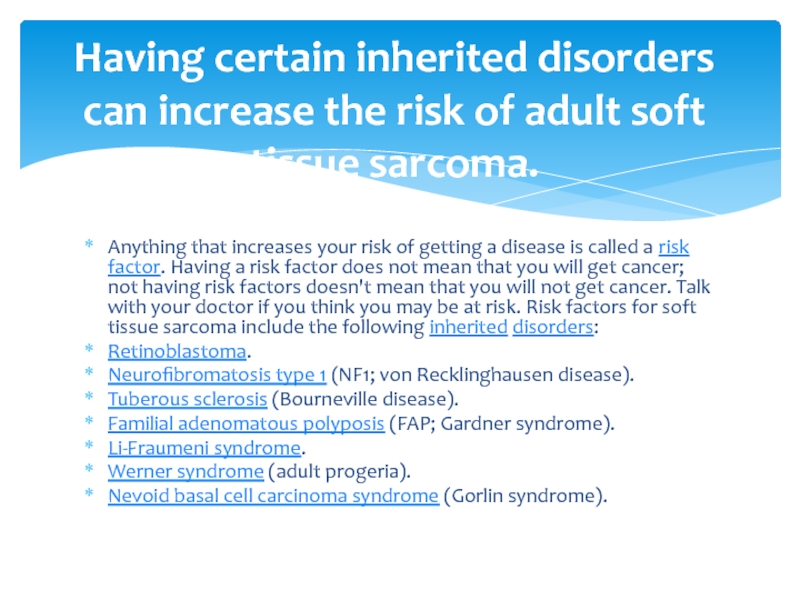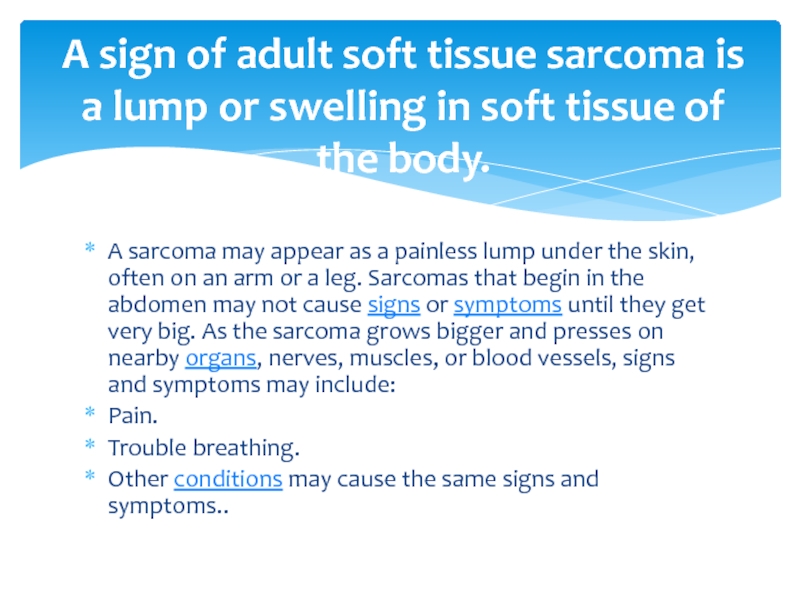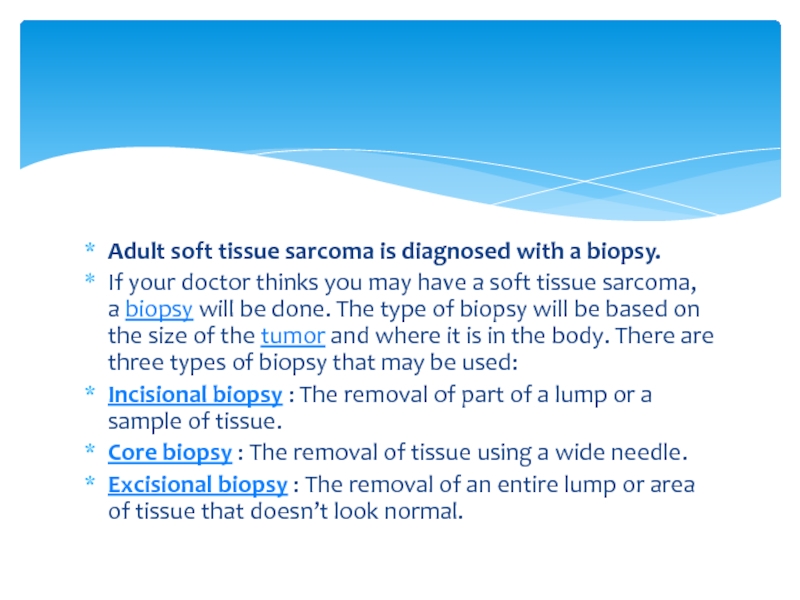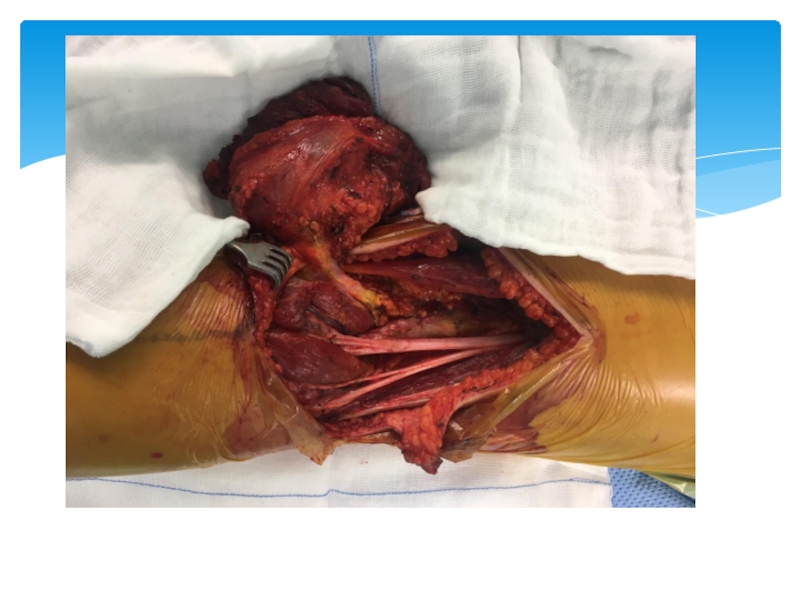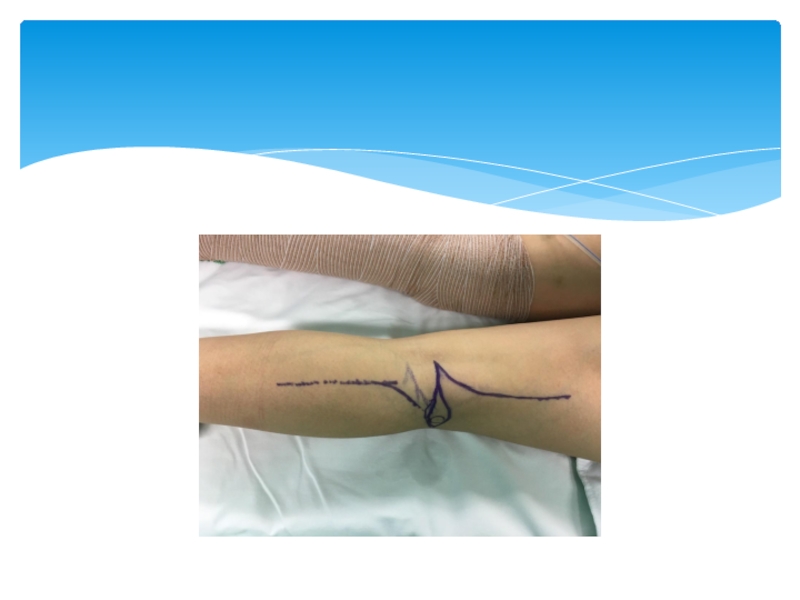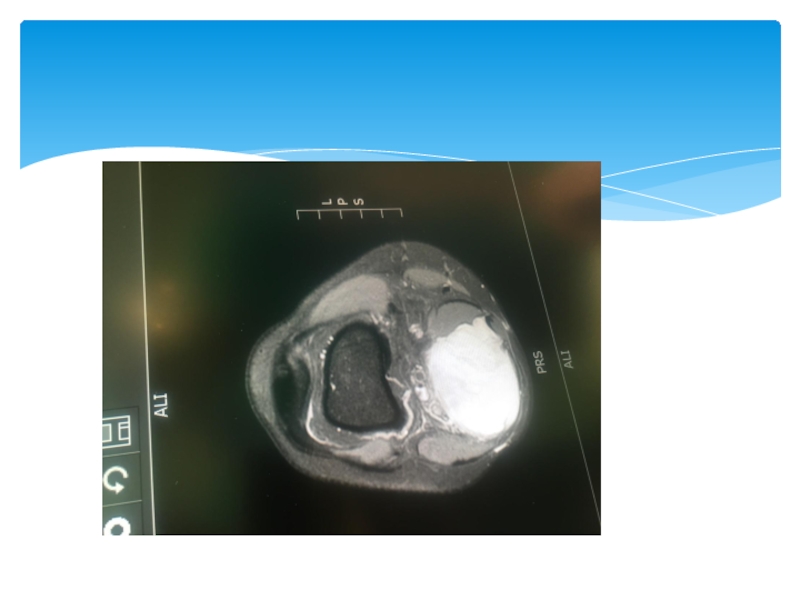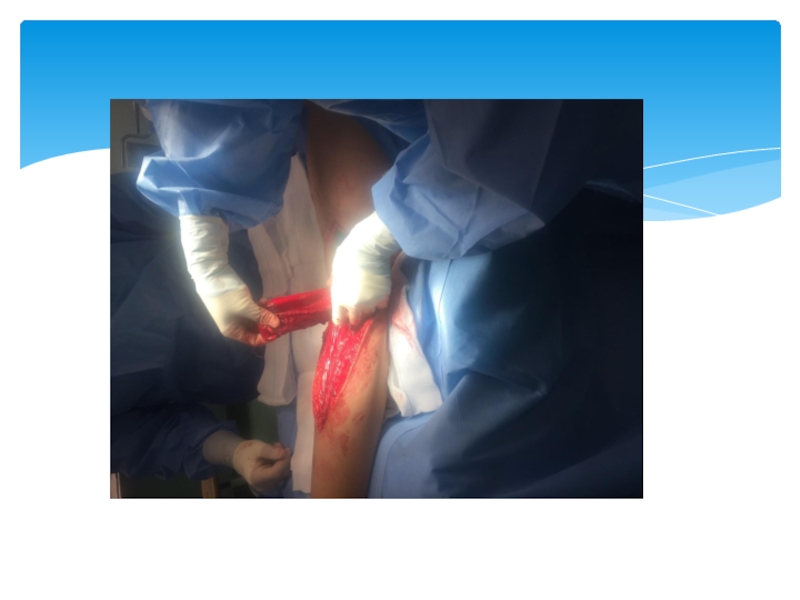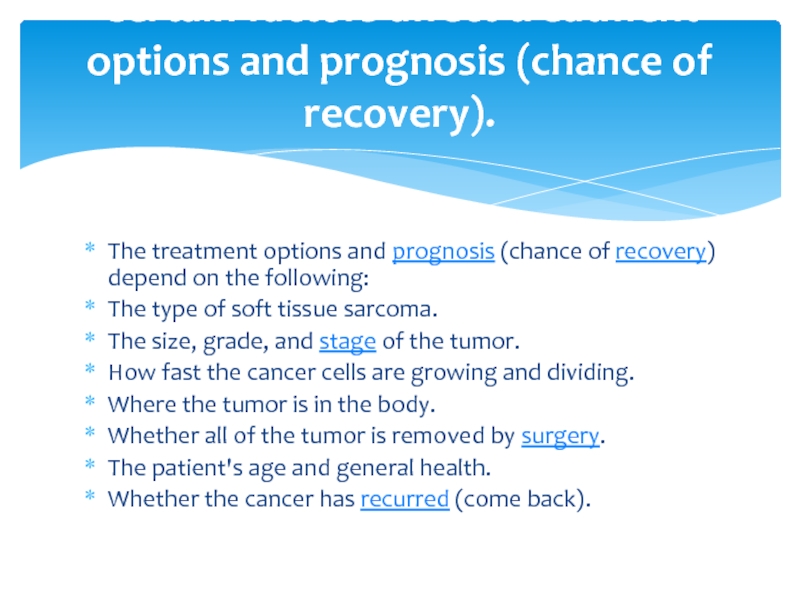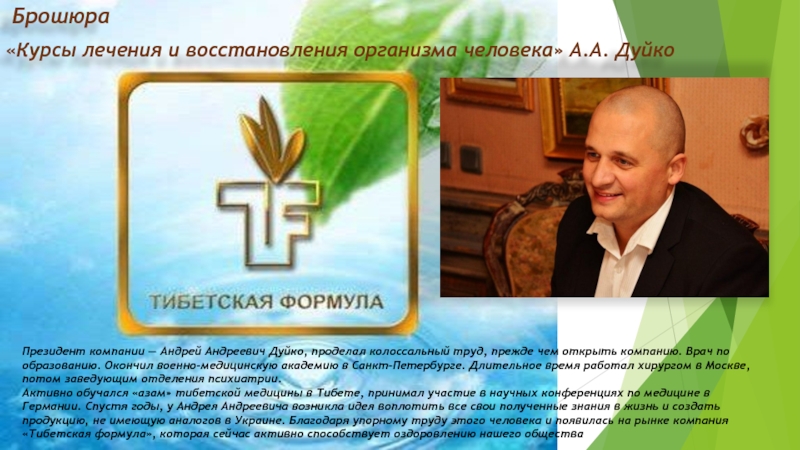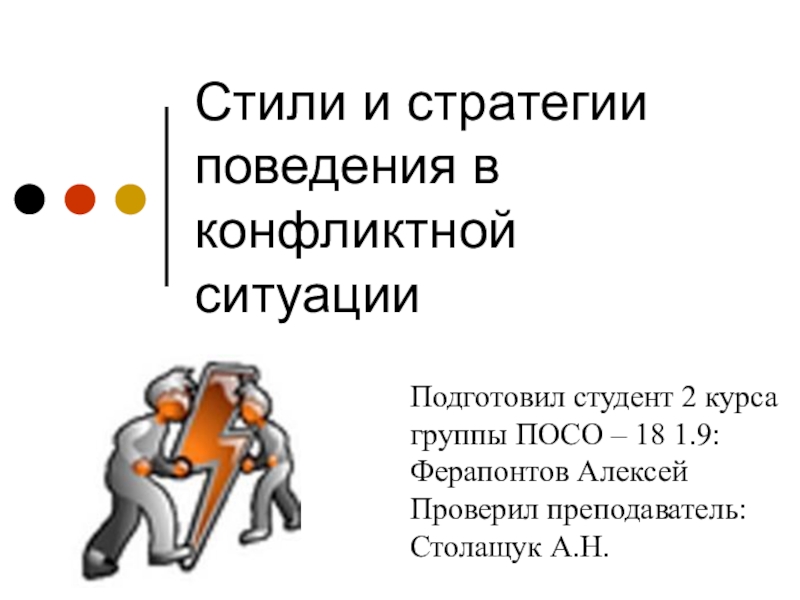Разделы презентаций
- Разное
- Английский язык
- Астрономия
- Алгебра
- Биология
- География
- Геометрия
- Детские презентации
- Информатика
- История
- Литература
- Математика
- Медицина
- Менеджмент
- Музыка
- МХК
- Немецкий язык
- ОБЖ
- Обществознание
- Окружающий мир
- Педагогика
- Русский язык
- Технология
- Физика
- Философия
- Химия
- Шаблоны, картинки для презентаций
- Экология
- Экономика
- Юриспруденция
UKCL
Содержание
- 1. UKCL
- 2. Introduce What is the sacroma ConditionsDescription of a operation”s process reconstraction Literatures Plan
- 3. General Information About Adult Soft Tissue SarcomaKEY
- 4. SarcomaKEY POINTSAdult soft tissue sarcoma is a
- 5. Anything that increases your risk of getting
- 6. A sarcoma may appear as a painless
- 7. Adult soft tissue sarcoma is diagnosed with
- 8. Слайд 8
- 9. Слайд 9
- 10. Слайд 10
- 11. Слайд 11
- 12. The treatment options and prognosis (chance of recovery) depend on
- 13. Скачать презентанцию
Слайды и текст этой презентации
Слайд 2Introduce
What is the sacroma
Conditions
Description of a operation”s process
reconstraction
Literatures
Plan
Слайд 3General Information About Adult Soft Tissue Sarcoma
KEY POINTS
Adult soft tissue
sarcoma is a disease in which malignant (cancer) cells form
in the soft tissues of the body.Having certain inherited disorders can increase the risk of adult soft tissue sarcoma.
A sign of adult soft tissue sarcoma is a lump or swelling in soft tissue of the body.
Adult soft tissue sarcoma is diagnosed with a biopsy.
Certain factors affect treatment options and prognosis (chance of recovery).
Слайд 4Sarcoma
KEY POINTS
Adult soft tissue sarcoma is a disease in which
malignant (cancer) cells form in the soft tissues of the
body.Having certain inherited disorders can increase the risk of adult soft tissue sarcoma.
A sign of adult soft tissue sarcoma is a lump or swelling in soft tissue of the body.
Adult soft tissue sarcoma is diagnosed with a biopsy.
Certain factors affect treatment options and prognosis (chance of recovery).
Adult soft tissue sarcoma is a disease in which malignant (cancer) cells form in the soft tissues of the body.
The soft tissues of the body include the muscles, tendons (bands of fiberthat connect muscles to bones), fat, blood vessels, lymph vessels, nerves, and tissues around joints. Adult soft tissue sarcomas can form almost anywhere in the body, but are most common in the head, neck, arms, legs, trunk, abdomen, and retroperitoneum.
Слайд 5Anything that increases your risk of getting a disease is
called a risk factor. Having a risk factor does not mean
that you will get cancer; not having risk factors doesn't mean that you will not get cancer. Talk with your doctor if you think you may be at risk. Risk factors for soft tissue sarcoma include the following inherited disorders:Retinoblastoma.
Neurofibromatosis type 1 (NF1; von Recklinghausen disease).
Tuberous sclerosis (Bourneville disease).
Familial adenomatous polyposis (FAP; Gardner syndrome).
Li-Fraumeni syndrome.
Werner syndrome (adult progeria).
Nevoid basal cell carcinoma syndrome (Gorlin syndrome).
Having certain inherited disorders can increase the risk of adult soft tissue sarcoma.
Слайд 6A sarcoma may appear as a painless lump under the
skin, often on an arm or a leg. Sarcomas that
begin in the abdomen may not cause signs or symptoms until they get very big. As the sarcoma grows bigger and presses on nearby organs, nerves, muscles, or blood vessels, signs and symptoms may include:Pain.
Trouble breathing.
Other conditions may cause the same signs and symptoms..
A sign of adult soft tissue sarcoma is a lump or swelling in soft tissue of the body.
Слайд 7Adult soft tissue sarcoma is diagnosed with a biopsy.
If your
doctor thinks you may have a soft tissue sarcoma, a biopsy will
be done. The type of biopsy will be based on the size of the tumor and where it is in the body. There are three types of biopsy that may be used:Incisional biopsy : The removal of part of a lump or a sample of tissue.
Core biopsy : The removal of tissue using a wide needle.
Excisional biopsy : The removal of an entire lump or area of tissue that doesn’t look normal.
Слайд 12The treatment options and prognosis (chance of recovery) depend on the following:
The type
of soft tissue sarcoma.
The size, grade, and stage of the tumor.
How fast
the cancer cells are growing and dividing.Where the tumor is in the body.
Whether all of the tumor is removed by surgery.
The patient's age and general health.
Whether the cancer has recurred (come back).
Certain factors affect treatment options and prognosis (chance of recovery).
